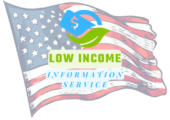Help For Low Income
In today’s fast-paced world, finding financial stability can be a daunting task. Whether you are a low-income individual or a family struggling to make ends meet, there are various challenges associated with managing your finances. However, there is hope. This blog post aims to provide you with valuable insights on how to navigate through these difficulties by exploring different avenues. From government assistance programs designed to offer support, to effective financial management tips and affordable housing options, we will also delve into job training and education programs. Let’s empower ourselves with the knowledge necessary to improve our financial well-being.
Government Assistance Programs For Low Income Individuals
Government Assistance Programs for Low Income Individuals
Living on a low income can be challenging, with many individuals and families struggling to make ends meet. Fortunately, there are a variety of government assistance programs available to help provide support and resources for those in need. These programs aim to alleviate the financial burden and improve the quality of life for low-income individuals and families.
One such program is the Supplemental Nutrition Assistance Program (SNAP), which provides eligible participants with financial assistance to purchase food. SNAP benefits are issued on an electronic debit card that can be used at authorized retailers, helping individuals and families obtain nutritious meals. Additionally, there are programs like the Women, Infants, and Children (WIC) program that offers nutrition education, counseling, and supplemental nutritious foods to pregnant women, new mothers, and young children.
Another crucial program is Medicaid, a joint federal and state program that provides health coverage to low-income individuals and families. Medicaid covers essential medical services such as doctor visits, hospital stays, prescription medications, and preventive care. This program plays a vital role in ensuring that individuals with limited income can access necessary healthcare services without incurring high medical expenses.
- Furthermore, there are programs such as Temporary Assistance for Needy Families (TANF) that provide temporary financial assistance and support services to low-income families. TANF aims to promote self-sufficiency by offering job preparation, work opportunities, and assistance with childcare expenses. This program helps families transition from welfare to employment and achieve long-term stability.
In addition to these key government assistance programs, there are also housing assistance programs available for low-income individuals and families. The Section 8 Housing Choice Voucher Program, for instance, provides rental assistance to eligible participants, allowing them to find safe and affordable housing in the private market. Public housing is another option in which individuals and families can access affordable rental units owned and managed by local housing authorities. These programs help alleviate the burden of housing expenses, providing stability and security for those on a limited income.
| Program Name | Description |
| Supplemental Nutrition Assistance Program (SNAP) | Provides financial assistance for purchasing food |
| Women, Infants, and Children (WIC) Program | Offers nutrition education, counseling, and supplemental nutritious foods to pregnant women, new mothers, and young children |
| Medicaid | Provides health coverage for low-income individuals, covering essential medical services |
| Temporary Assistance for Needy Families (TANF) | Offers temporary financial assistance, job preparation, work opportunities, and assistance with childcare expenses |
| Section 8 Housing Choice Voucher Program | Provides rental assistance to find safe and affordable housing in the private market |
| Public Housing | Offers affordable rental units owned and managed by local housing authorities |
These are just a few examples of the many government assistance programs available for low-income individuals and families. It is essential to explore and take advantage of these resources to improve financial stability and access necessary support. By utilizing these programs, individuals can alleviate the burden of expenses and focus on building a brighter future.
Financial Management Tips For Low Income Families
Managing finances can be a challenging task, particularly for low-income families. Limited resources and a tight budget can make it difficult to meet all the financial obligations and save for the future. However, with proper financial management strategies, it is possible to make the most out of the available income and secure a stable financial future. Here are some helpful tips to assist low-income families in effectively managing their finances.
1. Create a Budget: Developing a monthly budget is crucial for managing money effectively. It helps in tracking income, expenses, and identifying areas where adjustments can be made to save money. Start by listing all sources of income and then categorize and allocate funds for essential expenses such as housing, utilities, food, and transportation. Consider incorporating a small amount for savings as well.
2. Cut Down on Expenses: To stretch the limited income, it is essential to reduce unnecessary expenses. Analyze your spending habits and identify areas where you can cut back. This could involve making small changes like cooking at home instead of eating out or seeking out free or low-cost entertainment options. Every dollar saved can contribute to a more secure financial situation.
3. Seek Assistance: Low-income families should not hesitate to seek out assistance available to them. Various government assistance programs provide financial aid, food stamps, healthcare subsidies, and other valuable resources. These programs can alleviate financial burdens and help families meet their basic needs. Research and locate the relevant programs in your area to access the support you and your family may qualify for.
- 4. Prioritize Debt Repayment: If you have accumulated debt, it is crucial to prioritize its repayment. High-interest debts can quickly become overwhelming and hinder financial progress. Consider consolidating debts or negotiating with creditors to establish a manageable repayment plan. Reducing debt will free up finances for other essential expenses and savings.
| Key Points |
|---|
| 1. Create a budget to track income and expenses. |
| 2. Cut down on unnecessary expenses to save money. |
| 3. Seek government assistance programs for additional support. |
| 4. Prioritize debt repayment to reduce financial burdens. |
By implementing these financial management tips, low-income families can navigate their financial challenges and work towards a more stable and secure future. Remember, every small effort counts, and with consistency, it is possible to improve your economic situation and achieve financial well-being.
Affordable Housing Options For Low Income Individuals
Are you struggling to find affordable housing due to a low income? If so, you are not alone. Many individuals and families face the challenge of finding suitable and affordable housing options. However, there are programs and resources available to help low-income individuals access safe and affordable housing. In this blog post, we will explore some of the housing assistance programs and options that can provide relief and support for those in need.
One option that can provide help for low-income individuals is government assistance programs. These programs are designed to assist individuals with low incomes in accessing affordable housing options. One such program is the Section 8 Housing Choice Voucher Program, which provides rental assistance to eligible individuals and families. Participants in the program receive a voucher that can be used to help subsidize their monthly rent payments, allowing them to afford housing in the private market.
Another housing assistance program to consider is the Low-Income Home Energy Assistance Program (LIHEAP). While LIHEAP primarily focuses on helping individuals with their energy bills, it can indirectly contribute to housing affordability by reducing the financial burden of utility costs. By relieving some of the monthly expenses, individuals may have more funds available to allocate towards housing payments.
In addition to government assistance programs, there are also non-profit organizations and community initiatives that provide affordable housing options for low-income individuals. These organizations often offer subsidized housing units or affordable rental properties specifically designed for those with limited incomes. Examples include Habitat for Humanity, Mercy Housing, and Community Land Trusts. These organizations strive to create stable and affordable housing environments that promote self-sufficiency and improve living conditions for low-income individuals.
| Program/Initiative | Description |
|---|---|
| Section 8 Housing Choice Voucher Program | A government program that provides rental assistance to eligible individuals and families. |
| Low-Income Home Energy Assistance Program (LIHEAP) | Assists individuals with their energy bills, indirectly contributing to housing affordability by reducing utility costs. |
| Habitat for Humanity | A non-profit organization that offers affordable housing options through sweat equity and volunteer participation. |
| Mercy Housing | Provides affordable housing units and operates programs to support residents’ well-being and self-sufficiency. |
| Community Land Trusts | Community-based organizations that acquire and hold land for the benefit of the community, ensuring long-term affordability. |
It is crucial to note that the availability of these housing options may vary depending on your location and the specific requirements of each program. It is advisable to research and reach out to local housing authorities, non-profit organizations, and community agencies to explore the affordable housing options available to you.
Job Training And Education Programs For Low Income Individuals
Job Training and Education Programs for Low Income Individuals
Getting a good education and acquiring job skills are essential for securing a stable and well-paying job. However, for low income individuals, this can often be a challenge due to financial constraints. Fortunately, there are several job training and education programs available that provide support and assistance to individuals with limited financial resources. These programs aim to bridge the gap between education and employment, enabling low income individuals to acquire the necessary skills and knowledge to pursue rewarding careers.
One such program is the Workforce Innovation and Opportunity Act (WIOA) which provides various services, including job training and education, to individuals facing barriers to employment. WIOA offers training programs in diverse fields such as healthcare, manufacturing, and information technology, among others. The program also provides financial assistance for tuition fees, books, and other educational expenses for eligible low income participants.
Another option is the Pell Grant program, administered by the U.S. Department of Education. This program offers need-based financial assistance to low income individuals pursuing higher education. The Pell Grant provides funds that can be used for tuition fees, books, and other educational expenses. The grant amount is determined based on the financial need of the applicant, making it an invaluable resource for low income individuals striving to improve their job prospects through education.
| Program | Benefits |
|---|---|
| WIOA | Job training and education services |
| Pell Grant | Financial assistance for higher education |
Furthermore, community colleges and vocational schools often offer affordable education and training programs tailored to the needs of low income individuals. These institutions understand the financial limitations faced by many students and provide flexible class schedules and financial aid options. This ensures that individuals with limited resources can acquire the necessary skills and qualifications to enter the workforce and pursue successful careers without the burden of excessive student loan debt.
In conclusion, job training and education programs play a crucial role in providing opportunities for low income individuals to improve their skills and employability. Whether through government assistance programs like WIOA and the Pell Grant, or through community colleges and vocational schools, these programs help break down barriers and open doors to a brighter future. By investing in education and training, low income individuals can attain the necessary skills and knowledge to secure stable and well-paying jobs, ultimately improving their overall financial well-being.
Frequently Asked Questions
Question: What are some government assistance programs available to low income individuals?
Answer: Some government assistance programs for low income individuals include Supplemental Nutrition Assistance Program (SNAP), Temporary Assistance for Needy Families (TANF), Medicaid, and the Low Income Home Energy Assistance Program (LIHEAP).
Question: How can low income families manage their finances effectively?
Answer: Low income families can manage their finances effectively by creating a budget, prioritizing expenses, seeking financial counseling or assistance, saving money, and exploring opportunities for additional income.
Question: What are some affordable housing options for low income individuals?
Answer: Affordable housing options for low income individuals include public housing, rental assistance programs like Section 8, and subsidized housing through non-profit organizations.
Question: What job training and education programs are available for low income individuals?
Answer: Job training and education programs for low income individuals vary by location, but options may include vocational training programs, community college courses, apprenticeship programs, and job placement services.
Question: How can I qualify for government assistance programs?
Answer: Eligibility requirements for government assistance programs vary, but they often consider income level, household size, and other factors. It is recommended to check the specific requirements for each program and apply accordingly.
Question: Can low income individuals receive financial help for medical expenses?
Answer: Yes, low income individuals may be eligible for Medicaid, a government program that provides health coverage to low income individuals and families. Additionally, some states offer additional assistance or programs specifically for medical expenses.
Question: Are there any resources available for low income individuals seeking higher education?
Answer: Yes, low income individuals can access resources such as scholarships, grants, and tuition assistance programs, which are specifically designed to help them pursue higher education and overcome financial barriers.



